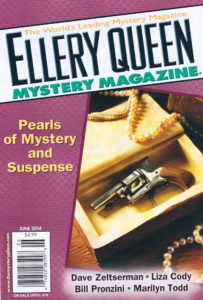
Scott-Free
Tallahassee, FL. Since we last spoke, our crooked Governor Rick Scott has now become our crooked Senator Rick Scott. I use the word ‘crook’ accurately and advisedly. After all, this is a crime site, not a political blog, and from a criminal standpoint, Rick Scott has made us all proud. In the land of crooks, cons, and craziness, how did he accomplish such singular honor?
Scott engineered the most massive Medicare/Medicaid fraud in history. After fines of $1.7-billion– that’s ‘billion’ with a ‘B’– he left the lucrative health care business a very wealthy man. In 2010, he turned his jaundiced sights on a fresh target– politics– where he outspent the Florida Republican party to win the nomination, and then outspent the Florida Democratic party to win the governorship. Now he becomes an unbecoming senator. Pass the fermented orange juice, please.
Reptilian Brain
St. Augustine, FL. Sheesh. Stay out of the pool if you can’t tell a crocodile from an alligator. But wait, there’s more: The dude’s accused of jumping in while wearing Crocs. A reptilian brain trumps no brain at all.
Leave Fluffy Alone!
Clearwater, FL. Where’s that crocodile when we need him? A year and a half earlier at Orlando Executive Airport, an alligator took a bite out of an airplane wing. That’s not unusual, but this plane was in flight.
Tuff Mothers
Sarasota, FL. My tiny 5-foot nothing mom was a fearsome spitfire, but these bitches fight with broken glass. It’s that reptilian brain, see.
Bouncing’s Not Only for Checks
Jacksonville, FL. It’s not funny. Police are hunting a masked man who beat a dozing laundromat patron with a pogo stick. Was it a lack of coordination or the extra starch? Next Up: Assault with a deadly unicycle.
Note: When I first heard this story, I chuckled in disbelief at the peculiarity of Florida. Later I learned the victim died from the oddball attack. It’s wise to remember even the goofiest crimes can have dire real-world consequences. To my knowledge, police have not located the perpetrator nor know a reason for the attack.
Extra Starch Again: It’s the Carbs
Yulee, FL. “Stick a fork in it,” a North Florida man took seriously. He stabbed a poor woman in the head for undercooking his potato. What an idiot. Think she’ll ever bake a spud for him again? Lucky for him, Nassau County jail serves all the fries he can eat.
Damn, the Driver Missed
Jacksonville, FL. Why chase ambulances when clients come to your door?
No Relation to Catherine the Great
Citra, FL. I’m… I’m without words… and creeped out. I’ve heard of kinky pony girls, but this bizarre bozo leaves me speechless.
Kill ’em with Kindness
Milton, FL. Can’t say our bad guys don’t wield a sense of humor. In Santa Rosa County, a wannabe killer scrawled ‘kindness’ on the blade of his machete and attacked his neighbor. The real shocker is this product of Florida education spelt the word correctly.
It’s the Carbs, Man
Lake City, FL. Let’s close on a sweet, feel-good story ya gotta love. Cops rescued a stolen Krispy Kreme Doughnut truck and about a zillion maple-glazed, which they (munch, munch) shared with homeless folks. (urp, ’scuse me)
Orlando, FL. An Orlando officer showed considerably less humor when he complained to a call-in talk show about that stereotype of police and doughnuts. A radio engineer isolated the background noise and realized he was phoning from a Dunkin’ Donuts.









































